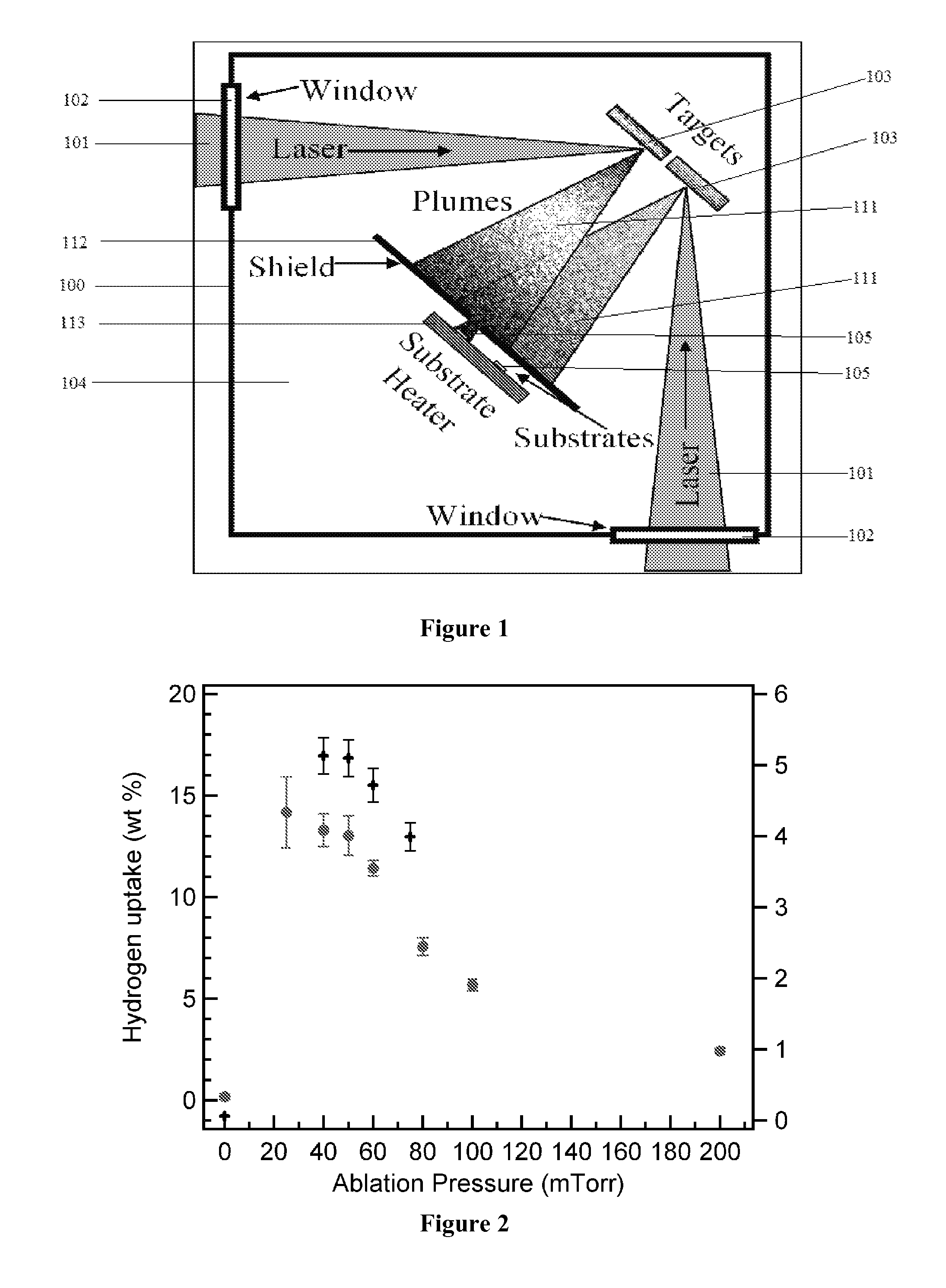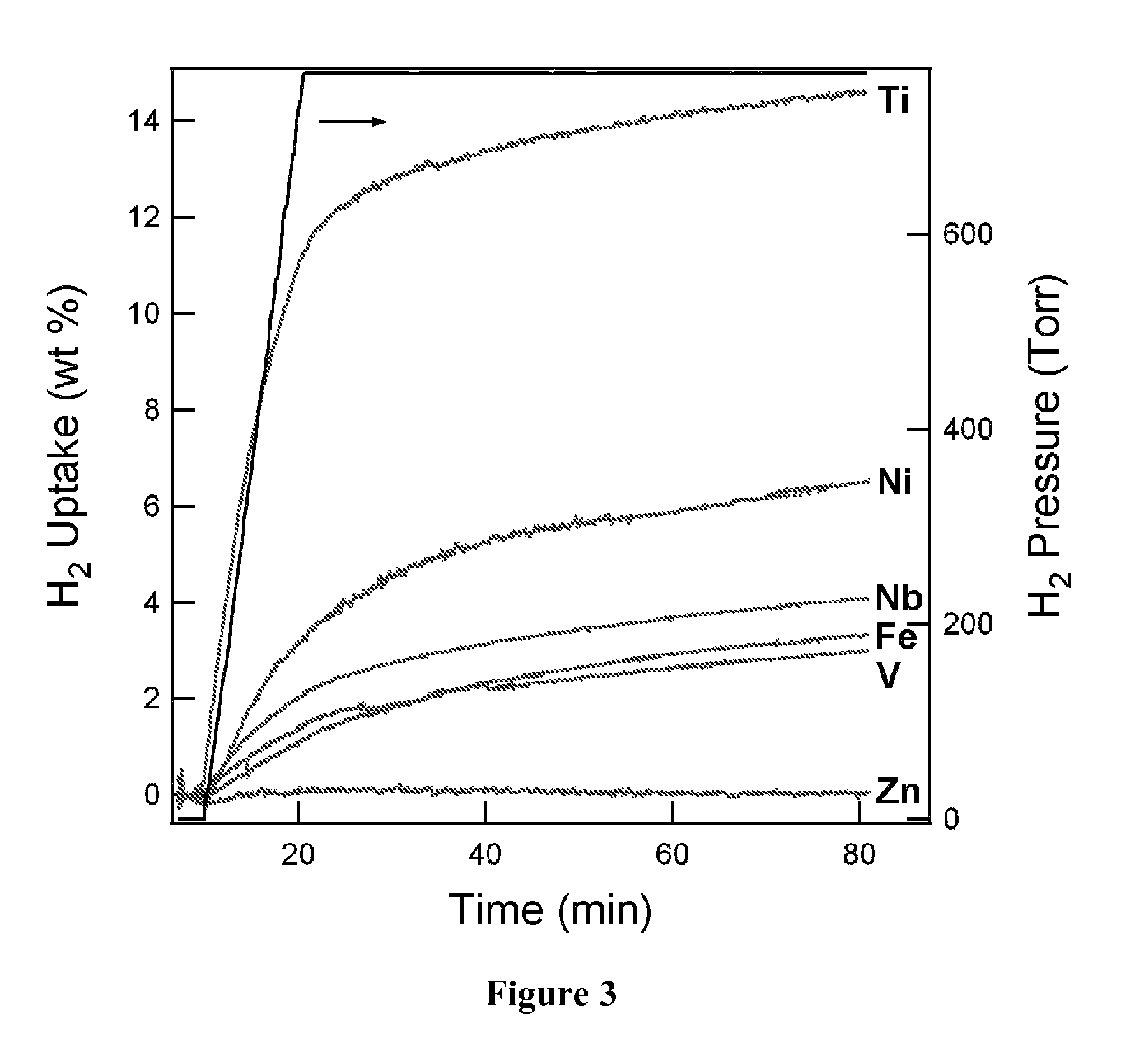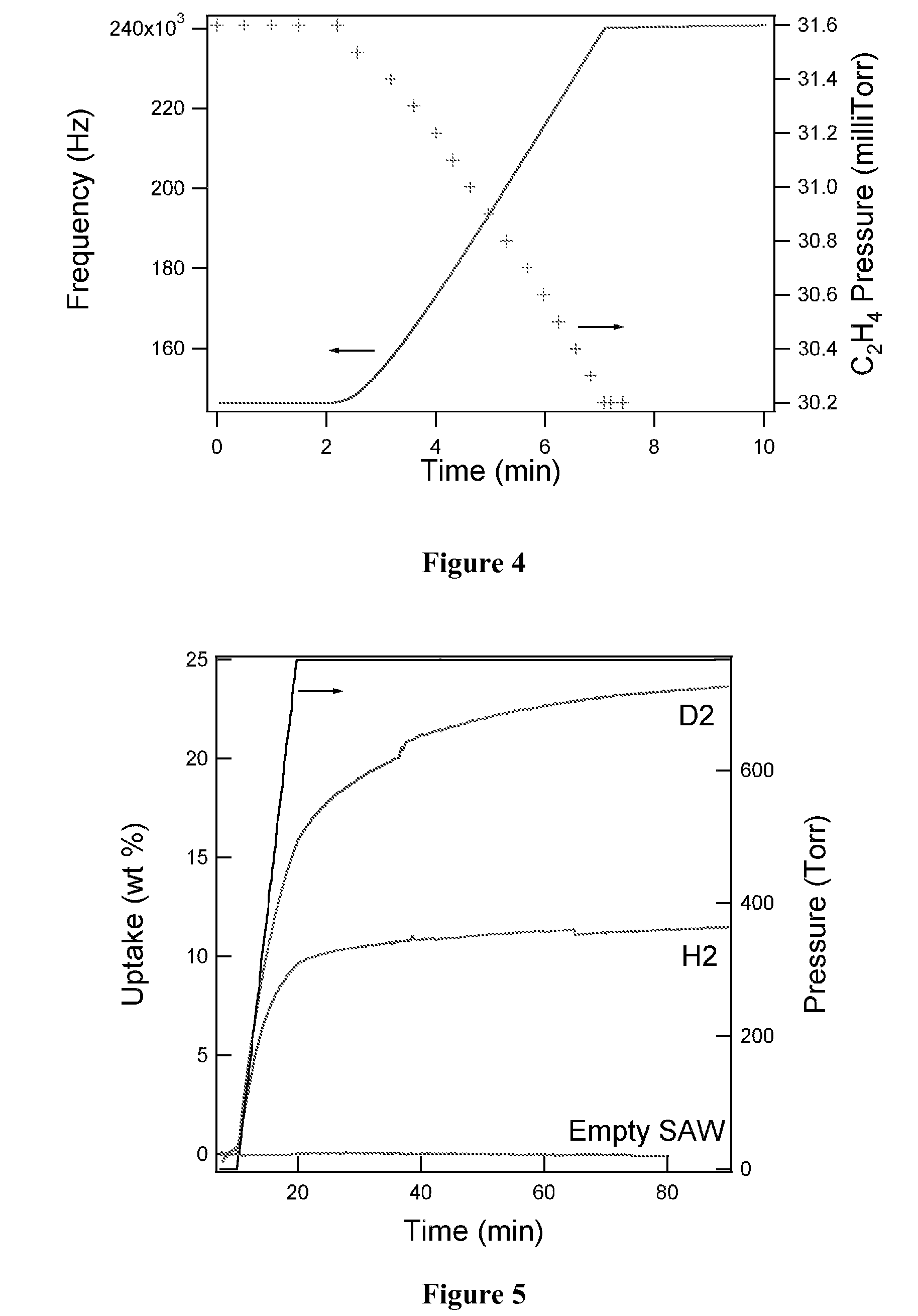Hydrogen storage material with intermediate bond strength and process for making the same
a technology of hydrogen storage material and bond strength, which is applied in the direction of hydrogen, metallic material coating process, inorganic chemistry, etc., can solve the problems of only being able to use materials at extreme temperatures, reducing increasing the cost of solar power investment. , to achieve the effect of increasing the commercialization of solar power, saving the risk, and increasing the economic benefits of solar power
- Summary
- Abstract
- Description
- Claims
- Application Information
AI Technical Summary
Benefits of technology
Problems solved by technology
Method used
Image
Examples
examples and experimental
RESULTS
[0091]Practice of the invention will be still more fully understood from the following examples and experimental results, which are presented herein for illustration only and should not be construed as limiting the invention in any way.
Experiment No. 1
Transition Metal-Ethylene Experiments
[0092]In this section results are presented of a transition metal-ethylene complex study where the complexes were formed in an ultra high vacuum pulsed laser deposition (PLD) chamber, were collected on quartz surface acoustic wave sensors for mass analysis, and were subsequently exposed to high purity hydrogen gas. The PLD system is of standard design and consists of a frequency double pulsed Nd:YAG laser that operated at 10 Hz, and where fluence equaled 1.6-65 J / cm2. The laser was used to ablate a rotating metal target in an ethylene atmosphere.
[0093]The technique used for the mass analysis of hydrogen absorbed in these experiments was unique. The technique is based on the application of a f...
example no.1
Example No. 1
Laboratory and Experimental Equipment Arrangement
[0116]The most commonly used technique for measuring hydrogen absorption is the volumetric (Sieverts) method. A significant requisite to employ this method is that the sample mass must be on the order of grams. For many of the new nanostructured materials of interest, in the context of hydrogen storage, due to limitations in fabrication methods this requirement often cannot be satisfied. Thermal desorption techniques are also commonly used to measure hydrogen desorption. In these cases, the samples are placed under vacuum and heated to release the hydrogen and a residual gas analyzer measures the concentration of released hydrogen. This method also requires at least milligrams of material be available. In contrast, gravimetric methods can be adopted to measure hydrogen sorption in smaller quantities. A microbalance placed inside a pressure cell with an inert reference as the counterbalance to the sample can be used and th...
PUM
| Property | Measurement | Unit |
|---|---|---|
| pressure | aaaaa | aaaaa |
| pressure | aaaaa | aaaaa |
| distance | aaaaa | aaaaa |
Abstract
Description
Claims
Application Information
 Login to View More
Login to View More - R&D Engineer
- R&D Manager
- IP Professional
- Industry Leading Data Capabilities
- Powerful AI technology
- Patent DNA Extraction
Browse by: Latest US Patents, China's latest patents, Technical Efficacy Thesaurus, Application Domain, Technology Topic, Popular Technical Reports.
© 2024 PatSnap. All rights reserved.Legal|Privacy policy|Modern Slavery Act Transparency Statement|Sitemap|About US| Contact US: help@patsnap.com










